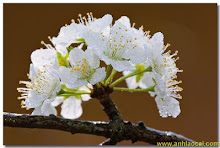The amazing amphibians and reptiles of the Philippine island Luzon
 |
| Rafe M. Brown |
A recent study of the amphibians and reptiles of Sierra Madre Mountain Range, northeastern Luzon, reveals a preliminary enumeration of more than 100 species that contribute to the unique biodiversity of the region. At present, the Luzon region's herpetological range stands at more than 150 species. Out of these, a total of 49 amphibian species have been documented, 44 of which are native and a remarkable 32 endemic. In the world of reptiles, Luzon can boast with 106 native species, 76 of which are unique to this region. The catalogue published in the open access journal Zookeysfeatures a fascinating range of reptiles and amphibians, such as the beautifully coloured colubrid snake Hologerrhum philippinum, which is one of the four endemic snake genera from the region and can be recognized by the vibrant-yellow skin decoration. Another species that provokes amazement is the bizarre soft-shell turtle Pelochelys cantorii. The variety described in this study includes fascinating frogs, crocodiles, snakes, lizards and many more, offering a menagerie of shapes and colours all documented in stunning photography.
 |
| Rafe M. Brown |
With such a great array of biodiversity, the northern Philippines has been the focus of of large numbers of new species discoveries and re-discoveries of new species in recent decades, establishing it as a major regional biodiversity hotspot. The herpetological diversity of the island may grow to as many as 90-100 (70-80% endemic) amphibian species and as many as 150-160 reptiles with the contributions of ongoing biodiversity studies in the near future. It will be a major challenge to monitor these communities through time in order to assess their responses to land use changes, climate change, resource extraction, introduced species, emerging infectious disease, and habitat degradation.
 |
| Rafe M. Brown |
With the initial baseline information provided in the survey, tremendous opportunities exist for future studies in taxonomy, biogeography, ecology and conservation of northern Luzon's amphibians and reptiles. Conservation of Luzon's vertebrate biodiversity remains an on-going effort, challenged by rapid development,logging, mining and conversion of natural habitats into agricultural lands to provide food for a burgeoning human population.

Posted by Unknown
on Saturday, February 09, 2013.
Filed under
Plants And Animals
.
You can follow any responses to this entry through the
RSS 2.0








